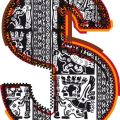Introduction to Surya Graha in Indian Thought
Within the rich tapestry of Indian philosophy and cultural life, Surya Graha—commonly referred to as the Sun planet in Vedic astrology (Jyotish)—holds a unique and elevated position. Rooted deeply in ancient scriptures such as the Rigveda, Puranas, and classical Jyotisha texts, Surya is not merely a celestial body but an embodiment of divinity and authority. In traditional Indian cosmology, Surya Dev (the Sun God) is revered as the ultimate source of energy, vitality, and illumination, both literally and metaphorically. The Sun’s central role extends beyond physical sustenance; it symbolizes the atman (soul), self-realization, and the inner light that guides moral and social conduct.
The astrological framework of Jyotish Shastra places Surya among the Navagrahas—the nine planetary influencers—where he is considered the royal graha, representing power, leadership, government, and societal status. Surya is associated with qualities such as courage (dhairya), willpower (iccha shakti), clarity of vision, and righteous action (dharma). These attributes profoundly shape cultural narratives and social structures throughout India. Festivals like Makar Sankranti, Chhath Puja, and Pongal are dedicated to honouring Surya Dev’s benevolence, further cementing his significance in everyday Indian life. Thus, understanding Surya Graha’s multifaceted symbolism provides valuable insights into its pervasive influence on political hierarchies and social status within Indian society.
Surya Graha and its Symbolism in Indian Polity
Surya Graha, commonly known as the Sun in Vedic astrology, occupies a central position in Indian cosmology and has profoundly shaped political discourse across centuries. In the context of Indian polity, Surya symbolizes not only physical illumination but also metaphorical enlightenment—attributes such as authority, vitality, leadership, and moral rectitude are frequently associated with this celestial body. The invocation of Surya Graha within political narratives is both ancient and dynamic, reflecting evolving understandings of power and legitimacy.
During the era of ancient kingship, rulers were often depicted as embodiments or descendants of Surya, drawing on the concept of the “Suryavanshi” (Solar Dynasty) lineage. This association provided legitimacy to their reign and conferred a divine aura upon their rule. Monarchs patronized temples dedicated to Surya and performed elaborate rituals to invoke his blessings for prosperity, justice, and continuity of power. These traditions laid the foundation for symbolic references that persisted through successive dynasties.
In modern Indian politics, the symbolism of Surya Graha continues to find resonance. Political leaders invoke solar metaphors in speeches and campaigns to project themselves as sources of inspiration and guidance for the nation. Phrases such as “rising sun of leadership” or “illumination of progress” are frequently employed to connect with cultural consciousness rooted in Vedic tradition. Moreover, prominent political parties have integrated solar imagery into their emblems and slogans, signaling ideals of clarity, vision, and energy.
Symbolic Attributes of Surya Graha in Political Discourse
| Attribute | Ancient Polity | Contemporary Politics |
|---|---|---|
| Legitimacy | Royal lineage traced to Suryavanshi tradition | Leaders portrayed as rightful guides or “sun-like” |
| Moral Authority | Emphasis on dharma (righteousness) | Reference to transparency and ethical governance |
| Vitality & Energy | Kingly vigor represented by solar rituals | Youthfulness and dynamism in campaign rhetoric |
| Enlightenment | Pursuit of knowledge linked to Surya worship | Commitment to education and national awakening |
The enduring symbolism of Surya Graha thus bridges India’s historical reverence for cosmic order with contemporary aspirations for social progress. Whether as an emblematic presence in royal ceremonies or a metaphorical force in modern oratory, Surya remains an integral motif articulating ideals of leadership and societal status within Indian political culture.

3. Astrological Influence: Surya Graha and Leadership Qualities
Within the intricate tapestry of Indian society, astrology holds a unique position, especially when evaluating the traits of authority and leadership. The Surya Graha, or Sun planet, is considered the ultimate source of vitality, confidence, and governance in Vedic astrology. According to traditional Indian horoscope analysis, the placement and strength of Surya Graha in an individual’s natal chart directly influence their capacity for leadership, charisma, and public recognition.
In the context of Indian politics and social status, a strong Surya in one’s horoscope is frequently associated with inherent qualities such as decisiveness, magnanimity, and an ability to command respect. These attributes are highly prized in political leaders and figures of authority. The Suryas dominance in key houses—such as the tenth house (Karma Bhava), which governs profession and status—often marks individuals who rise to prominent positions within government or society. This astrological assessment is not limited to politicians but extends to community heads, bureaucrats, and even local influencers.
Many Indian families consult astrologers before major life decisions, including selecting candidates for leadership roles or marriages into politically influential families. The natal chart’s depiction of Surya’s aspect (drishti), conjunctions (yuti) with other planets like Budh (Mercury) or Shukra (Venus), and its dignity (uchcha or neecha) become decisive factors in assessing a person’s potential for power and governance. For instance, a well-placed Surya often signals someone destined for public service or authoritative roles.
Astrologically oriented perceptions of leadership are further reinforced by cultural narratives that link Surya with legendary rulers and reformers throughout Indian history. From mythological figures like Lord Rama and Emperor Ashoka to modern-day leaders, the association between a powerful Surya and successful rulership persists robustly within the Indian consciousness.
Thus, the Surya Graha operates as both a symbolic and practical filter through which society views legitimate authority. This deep-rooted belief system continues to shape political aspirations and societal hierarchies in contemporary India, highlighting the enduring relevance of Vedic astrology in everyday social practices.
4. Social Status, Caste, and Surya Graha
The relationship between Surya Graha (the Sun) and one’s social status in Indian society is deeply rooted in the country’s astrological and cultural traditions. Historically, the placement of Surya in an individual’s horoscope has been interpreted as a major indicator of social hierarchy, respect, and authority. This belief continues to influence perceptions of caste identity and recognition within various communities across India.
Surya Graha and Social Hierarchy
In Vedic astrology, Surya is regarded as the planet of leadership, power, and self-esteem. Its strength or weakness in a natal chart is often associated with a persons ability to command respect and exert influence within their social sphere. Among traditional Indian families, especially those who adhere closely to astrological practices, a strong Surya is considered desirable for roles involving administration, politics, or public recognition.
Connection to Kshatriya Status
The Kshatriya varna, historically recognized as the warrior and ruler class in the Hindu varna system, is closely linked to qualities symbolized by Surya—courage, authority, and governance. According to classical texts and popular beliefs, individuals with a prominent Surya in their horoscope are thought to naturally embody Kshatriya-like traits regardless of their birth caste. This has led to instances where astrological readings have subtly influenced social mobility or at least public perception thereof.
Astrological Indicators and Social Recognition
Astrologers frequently examine the house placement and dignity (such as exaltation or debilitation) of Surya when predicting an individual’s potential for achieving fame or high status. The following table summarizes common interpretations:
| Surya Placement | Traditional Interpretation | Societal Implication |
|---|---|---|
| Surya in 10th House | High administrative ability; leadership qualities | Potential for political office or community leadership |
| Exalted Surya (Aries) | Strong willpower; natural authority | Social recognition; respected status among peers |
| Debilitated Surya (Libra) | Lack of self-esteem; difficulty asserting oneself | Lesser societal influence; possible struggles with recognition |
| Conjunction with Rahu/Ketu | Fluctuating status; unconventional path to authority | Unpredictable reputation; sometimes sudden rise or fall |
Cultural Nuances in Different Regions
The weight given to Surya Graha in determining social status varies regionally. In North Indian states such as Uttar Pradesh and Rajasthan, where traditional caste dynamics are pronounced, astrology may reinforce established hierarchies. In metropolitan areas like Mumbai or Bangalore, astrological beliefs coexist with merit-based achievements but still hold sway during matrimonial alliances and community events.
Overall, while modern India increasingly emphasizes education and economic success as markers of status, the symbolic role of Surya Graha continues to shape both overt and subtle forms of social stratification—bridging ancient customs with contemporary aspirations.
5. Surya Namaskar, Rituals, and Public Figures
The Practice of Surya Namaskar in Indian Society
Surya Namaskar, or Sun Salutation, is a prominent yogic practice deeply rooted in Indian tradition. It is not merely a physical exercise but also a spiritual ritual performed to honour Surya Graha, the Sun God. This sequence of postures is considered auspicious and is believed to energise the body and mind, aligning the practitioner with cosmic energies. In many Indian households and public spaces, Surya Namaskar is performed during sunrise as a mark of gratitude towards Surya Devata, symbolising vitality, authority, and prosperity.
Sun-Worship Rituals and Cultural Significance
Beyond yoga, sun-worship manifests through various rituals such as Chhath Puja in North India and Makara Sankranti across the subcontinent. These observances reinforce the role of Surya Graha in maintaining social order and wellbeing. Participation in sun-worship rituals is seen as a way to seek blessings for health, success, and societal status. The reverence for the Sun is interwoven with ideas of leadership and governance, reflecting the ancient belief that rulers are divinely sanctioned by solar power.
Political Leaders and Public Participation
Indian politicians and social leaders often engage publicly in Surya Namaskar and other sun-related rituals. Such participation is strategic—it connects them with traditional values cherished by the masses. Leaders like Prime Minister Narendra Modi have been seen practising Surya Namaskar during International Yoga Day celebrations, signalling their adherence to cultural roots. By aligning themselves with these practices, politicians project an image of discipline, spiritual integrity, and commitment to national heritage.
Enhancing Public Image through Ritual Engagement
Engagement in sun-worship rituals enables public figures to resonate with diverse communities. This not only enhances their personal brand but also strengthens their political legitimacy among voters who value tradition. In rural areas, where faith in astrology and planetary influences remains strong, such acts foster trust and relatability between leaders and citizens. The visible association with Surya Graha thus becomes a tool for reinforcing social status and consolidating influence within the socio-political landscape of India.
6. Contemporary Political Rhetoric and Surya Persona
In the vibrant landscape of modern Indian politics, references to Surya Graha—the Sun God—are far from obsolete. Politicians across party lines have strategically invoked the symbolism of Surya to reinforce their personal branding, campaign messaging, and public persona. The Sun, as a marker of vitality, leadership, and unwavering strength, resonates deeply within Indian socio-cultural consciousness, making it a powerful rhetorical tool in contemporary political discourse.
Surya Imagery in Political Language
Contemporary leaders often weave the language of radiance, illumination, and energy into their speeches, drawing parallels between their vision for India and the enlightening qualities of Surya. Phrases like “bringing light to the nation,” “dispelling darkness,” or “rising like the Sun” are regularly used to evoke hope, positivity, and a sense of renewal. These metaphors not only appeal to traditional beliefs but also connect with aspirations for progress and development.
Personal Branding: The Surya Archetype
Many politicians consciously cultivate a ‘Surya persona’—projecting themselves as tireless workers rising early (as is customary in Indian rural life), as sources of inspiration, or as harbingers of new beginnings. This archetype can be observed in campaign slogans, biographies, and even daily routines showcased in media. Some leaders align their public image with Surya’s attributes by emphasizing punctuality, discipline, and an active lifestyle—qualities that command respect across India’s diverse electorate.
Campaign Symbolism and Visual Cues
The iconography of Surya appears frequently in political rallies and visual campaigns. From banners featuring sunrise motifs to party logos echoing sun rays, these symbols subtly reinforce the message of enlightenment and growth. In states like Uttar Pradesh or Tamil Nadu, where astrology still plays a significant role in public life, such imagery can sway both urban and rural voters by tapping into shared cultural codes.
Cultural Resonance and Voter Perception
The deliberate association with Surya Graha enhances a politician’s legitimacy by connecting with deep-rooted values of resilience, transparency, and benevolence. Surveys indicate that voters respond positively to leaders who embody these solar traits—seeing them as trustworthy torchbearers capable of guiding society through challenges. Thus, the invocation of Surya Graha functions not just as a nod to tradition but as a strategic asset in shaping contemporary political narratives across India.
7. Conclusion: Surya Graha’s Enduring Role in Politics and Society
Surya Graha, the Sun planet in Indian astrology, continues to cast a profound influence on the nation’s political identities and social hierarchies. As an ancient symbol of authority, leadership, and vitality, Surya Graha has been deeply woven into India’s socio-political fabric—shaping both historical narratives and contemporary aspirations. Indian politicians frequently draw upon solar metaphors to project strength and inspire public confidence, while social structures often reflect the traditional values associated with Surya, such as honour, visibility, and paternal responsibility.
Summary of Ongoing Impact
The enduring reverence for Surya Graha manifests in public rituals, political iconography, and even election campaigning strategies. Political leaders are often compared to the Sun for their perceived ability to guide and energise the masses. In social life, those with prominent Surya placements in their horoscopes are traditionally seen as natural leaders or individuals destined for elevated status—reinforcing existing hierarchies but also offering aspirational pathways for upward mobility.
Future Prospects in a Changing Landscape
As India continues to modernise and globalise, the symbolic power of Surya Graha adapts to new realities. While scientific rationality gains ground, cultural beliefs around Surya still provide a sense of continuity amid rapid change. The invocation of solar qualities remains a potent tool for political legitimisation and community cohesion. Moving forward, the role of Surya Graha is likely to evolve in response to shifting values—integrating tradition with contemporary interpretations of leadership and social justice.
Enduring Relevance
In summary, Surya Graha’s legacy endures at multiple levels—guiding individual ambitions, shaping collective identities, and informing the moral language of politics and society. Its adaptability ensures that it remains relevant in India’s evolving socio-political landscape, serving both as a link to ancestral wisdom and a beacon for future progress.


